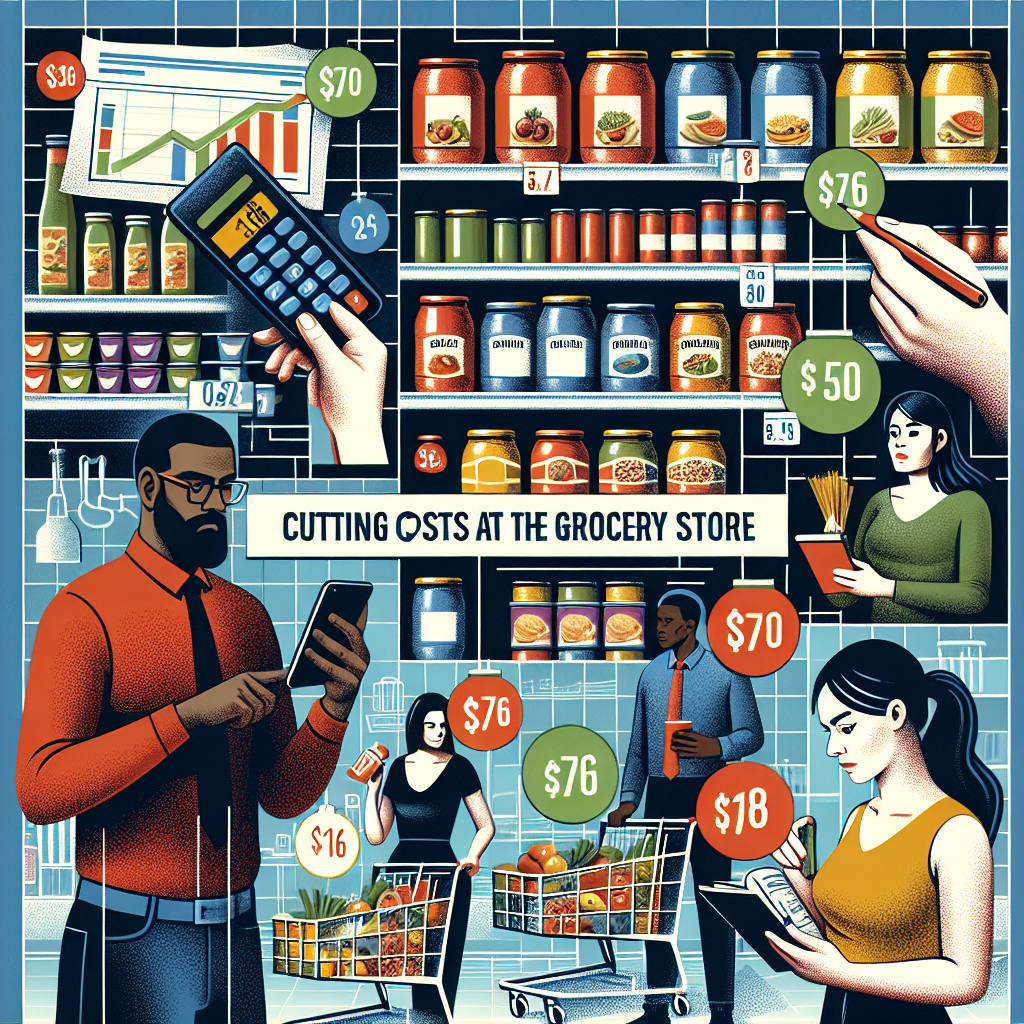Grocery shopping is a necessary chore for many households, but it doesn’t have to break the bank. With the rising cost of living, finding ways to cut costs at the grocery store has become increasingly important. In this article, we’ll share practical tips and strategies to help you save money while ensuring you get everything you need. From planning and budgeting to smart shopping tactics, these methods will change the way you shop.
1. Create a Grocery Budget
Establishing a grocery budget is the first step in managing your grocery costs. Determine how much you can afford to spend each month and stick to it. Breaking your budget down into weekly or bi-weekly amounts can help you keep better track of your spending.
Key Tips for Budgeting:
- Analyze Previous Spending: Look at past grocery expenses to gauge your average monthly spending.
- Include Essentials Only: Make sure your budget includes only necessary items such as food, toiletries, and household supplies.
- Adjust for Seasonal Changes: Keep in mind that certain times of the year (like holiday seasons) may require a temporary adjustment to your budget.
2. Plan Your Meals
Meal planning is one of the most effective ways to cut grocery costs. Planning your meals ahead not only streamlines your shopping list but also reduces impulse buys.
Meal Planning Tips:
- Create a Weekly Meal Plan: Dedicate time each week to plan meals based on what you already have at home.
- Use Ingredients Wisely: Select recipes that use similar ingredients to maximize utilization and minimize waste.
- Be Flexible: Keeping some versatile ingredients on hand can allow you to adapt your meals according to what’s on sale.
3. Build a Shopping List
Once your meals are planned, it’s essential to create a detailed shopping list. Shopping without a list can lead to overspending and unnecessary purchases.
Tips for an Effective Shopping List:
- Categorize Items: Organize your list by grocery store sections (fruits, vegetables, dairy, etc.) to make shopping more efficient.
- Stick to the List: Challenge yourself to only purchase what’s on your list to avoid impulse buys.
- Add Sales Items: If there are any sales on items you frequently use, consider adding those to your list to take advantage of reduced prices.
4. Take Advantage of Sales and Coupons
Hunting for deals and using coupons can yield significant savings at the grocery store.
Strategies for Using Sales and Coupons:
- Sign Up for Store Loyalty Programs: Most grocery stores offer loyalty programs that provide exclusive discounts and promotions.
- Download Coupon Apps: Use apps like Ibotta, Fetch Rewards, or Honey to find and store coupons digitally.
- Shop Sales Flyers: Regularly review weekly sales flyers to plan your shopping around what’s on sale.
5. Choose Generic Brands
Brand loyalty can sometimes lead to higher prices. Opting for generic or store-brand products can save you a substantial amount of money without sacrificing quality.
Benefits of Choosing Generic Brands:
- Comparable Quality: Most generic products are manufactured with the same standards as brand-name items, often at a lower price.
- Wider Variety: Many grocery stores stock a wide range of generic options, from pantry staples to fresh produce.
6. Buy in Bulk
Buying in bulk can be a great way to save money, especially on non-perishable items and staples.
Bulk Buying Best Practices:
- Invest in Memberships: Consider joining warehouse clubs like Costco or Sam’s Club that offer bulk discounts.
- Assess Your Usage: Only buy in bulk if you are certain you will use the items before they spoil or expire.
- Share with Friends: If possible, team up with friends or family to purchase bulk items together to split costs and reduce waste.
7. Don’t Shop on an Empty Stomach
Shopping on an empty stomach can lead to poor choices and unplanned purchases. Ensure you’re well-fed before heading to the store.
Reasons to Avoid Shopping Hungry:
- Impulsive Purchases: Hunger makes you more likely to buy snacks and convenience foods that weren’t on your list.
- Increased Spending: Your cart may fill up with items that are not part of your budget simply because you craved food while shopping.
8. Track Your Spending
After implementing these tips, tracking your grocery spending can help you stay on budget and identify areas for improvement.
How to Monitor Your Spending:
- Use Budgeting Apps: Apps like Mint or YNAB (You Need A Budget) can help you keep track of spending habits over time.
- Review Monthly Expenses: Regularly reassess your grocery budget to adapt to changes in your shopping habits or family needs.
Conclusion
Cutting costs at the grocery store requires a combination of planning, strategy, and discipline. By implementing these smart shopping tips, you can save money while still feeding your family nutritious meals. Remember, every little bit counts, and with thoughtful changes in your shopping habits, you can keep your grocery expenses in check without compromising on quality or variety. Start today, and watch your savings grow!

